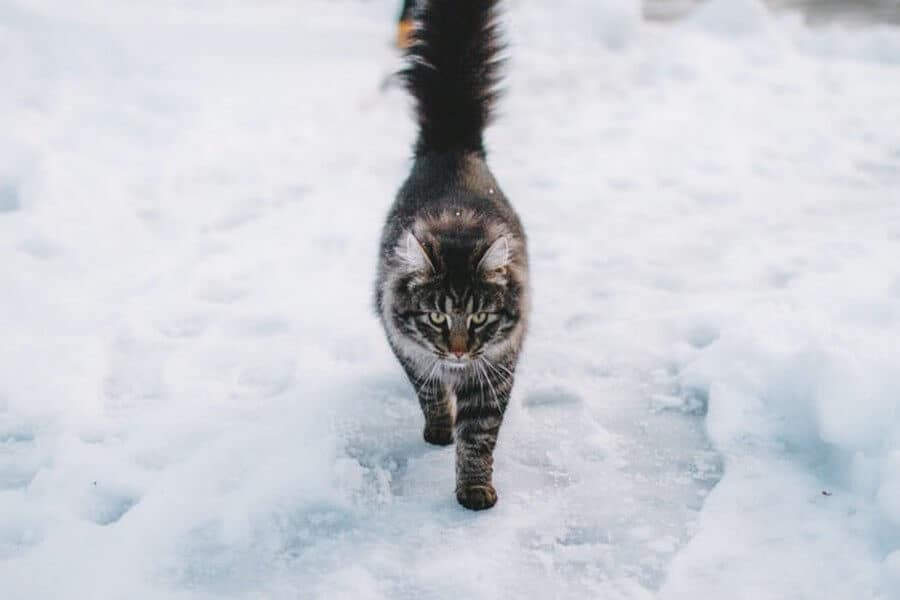Cats are one of the world’s most interesting creatures. They have been a beloved pet choice for hundreds of years, with the first record of domesticated cats dating even further back.
Even with cats being popular pets, there are also a number of stray cats that tend to live outside. Whether a cat is living outside because it is a stray or feral or if someone chooses to let their house cat be an indoor/outdoor cat, it is important to know a cat’s limitations to the outside.
This primarily includes the weather!
Cats can stay outside at night in the cold. Throughout the years, cats have evolved to adapt to various temperatures. As a result, they are able to handle the night’s colder temperatures. Your Cat’s hair is around 25·8 mm this helps them stay warm and withstand colder dropping temperatures.
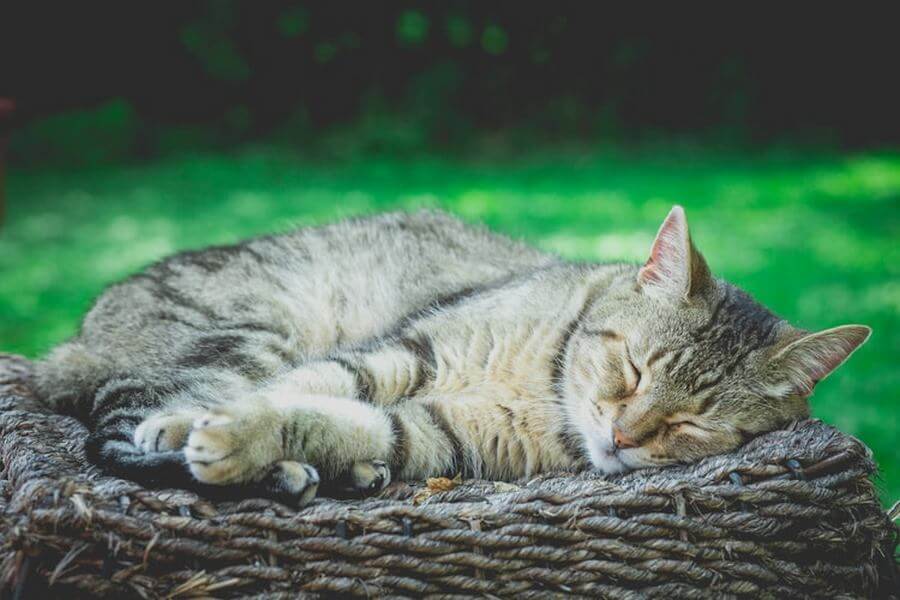
No one likes to think about animals out in harsh weather, especially cold temperatures. However, for some cats such as strays, this is an unfortunate part of them being outside cats.
In some cases, people do let their indoor cats outside to explore the surrounding areas. Indoor cats have adapted to colder temperatures just as well as strays have. However, indoor cats aren’t used to constantly being outdoors.
With this in mind, if an indoor cat can be brought in at night, they should. But, if it isn’t possible they should be okay in most cases.
Age plays a huge factor in a cat’s ability to handle colder temperatures as well. Kittens and older cats should never be left in colder conditions. In general, these age groups should avoid temperatures that are any lower than 45 degrees (or 7 degrees Celcius).
This is because they are frailer and more prone to have issues over younger or middle-aged cats.
Even though cats are prone to handling chillier temps, it doesn’t mean that they are able to simply be out in just any temperatures. They are still mammals and can experience things like frostbite or even hypothermia.
It is important to note that cats are prone to these conditions if it drops too far below the freezing point.
If it happens to appear entirely too cold outside, people who allow their indoor cats to go outside should make every attempt to keep them inside. This simply ensures that they won’t be exposed to harsh elements like extreme winter temperatures.
How Cold Is Too Cold For A Cat To Be Outside?
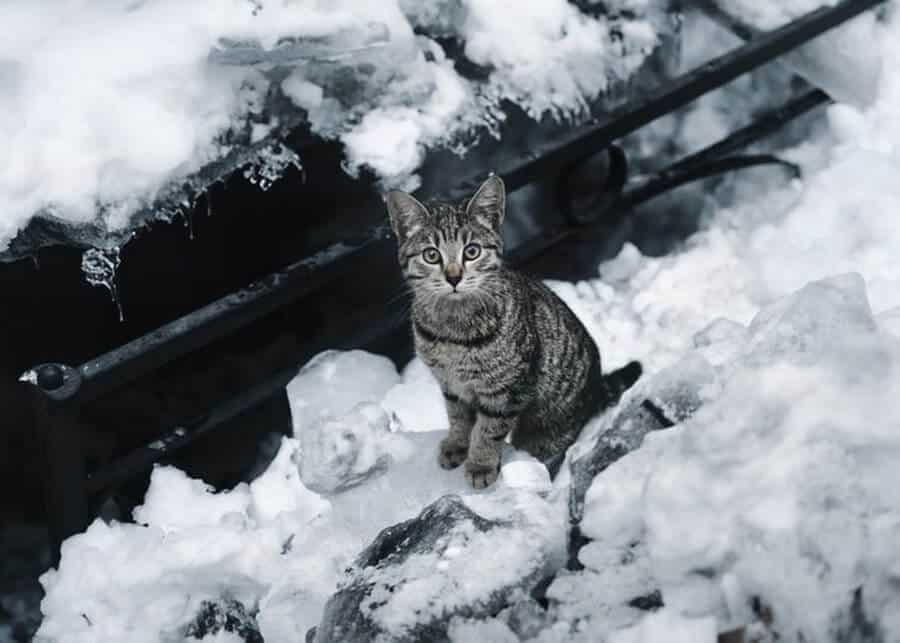
As expressed, even though cats have adapted to withstand colder temperatures, they still have a limit to how much cold they can handle. In general.
If the temperature outside drops well below the freezing point, it isn’t safe for a cat to be outside. This is because they can begin to experience the aforementioned conditions like frostbite or hypothermia.
Additionally, the extreme temperatures aren’t comfortable for their paw pads.
How Much Cold Can A Cat Tolerate?
Cats can tolerate cold weather that is above freezing. Above freezing is defined as anything that is over 32 degrees (or 0 degrees Celcius). Once the temperatures start dipping below 32 degrees, cats become less tolerant of the conditions.
This isn’t to say that if it is 30 degrees out that a cat will freeze but its body will be exposed to temperatures that aren’t as suitable for them.
Mostly everyone knows that the average human body temperature is around 98 to 99 degrees (or 36 to 37 degrees Celcius).
While this is pretty common knowledge, most people aren’t aware that the average cat’s body temperature is slightly higher.
Could this play a part in their ability to withstand colder temperatures? Perhaps.
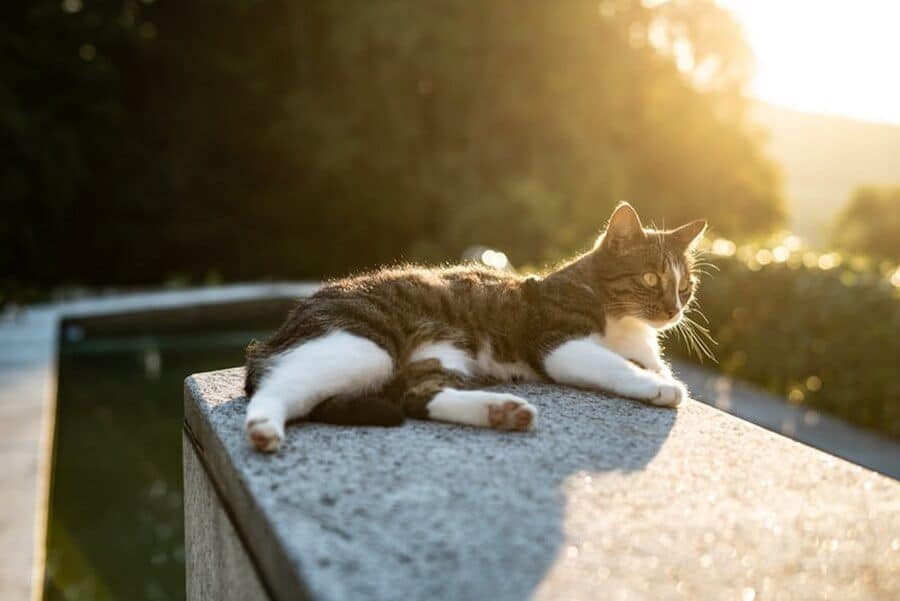
A cat’s average body temperature is around 100-102 degrees (or 38 to 39 degrees Celcius). It is true that cats have warmer body temperatures than a human, however, it isn’t by that much.
With this in mind, cats, like other mammals, are susceptible to frostbite and hypothermia. Frostbite is less likely to occur because it requires the temperatures to be in the negatives.
Although certain parts of the world can experience this kind of climate, it isn’t common everywhere.
Hypothermia is more likely to be a problem for cats than anything else. When the outside temperatures start falling (particularly at night in the winter) below freezing, it can be a big problem for cats.
Hypothermia occurs when the body starts losing heat faster than it can produce heat. This typically happens when someone or something is exposed to colder temperatures for a prolonged period of time.
So if a cat is outside in below freezing temps for an extended period of time, hypothermia can begin to set in.
Do Cats Like Sleeping In The Cold?
Cats do not inherently like sleeping in the cold. They prefer to nap in sunlight or warm areas. This is why pet cats will be found curled up in their owner’s lap or in various spots around the house that are generally warmer.
Even though they don’t like sleeping in the cold, they do sleep more when it is cold.
In areas of the world where the weather noticeably changes and it starts getting cold outside, cats will generally start seeking out places to take long naps (although they are known for long naps, to begin with!).
How Do Cats Stay Warm Outside?
It is totally common for an animal lover, especially a cat lover, to wonder how cats stay warm while they’re outside. Feral (or stray) cats are exposed to the elements year-round and have to find ways to survive if the weather gets too extreme.
These cats are more at risk of not finding enough food in the weather than they are of not finding shelter., although both could pose a problem.
Feral cats will seek out shelter in any way that they can. This can include inside abandoned buildings, under houses or porches, in highly vegetated areas, etc.
They seek out these points of shelter (or similar areas) to protect themselves from harsh winds which can make the cold weather appear even colder to the touch.
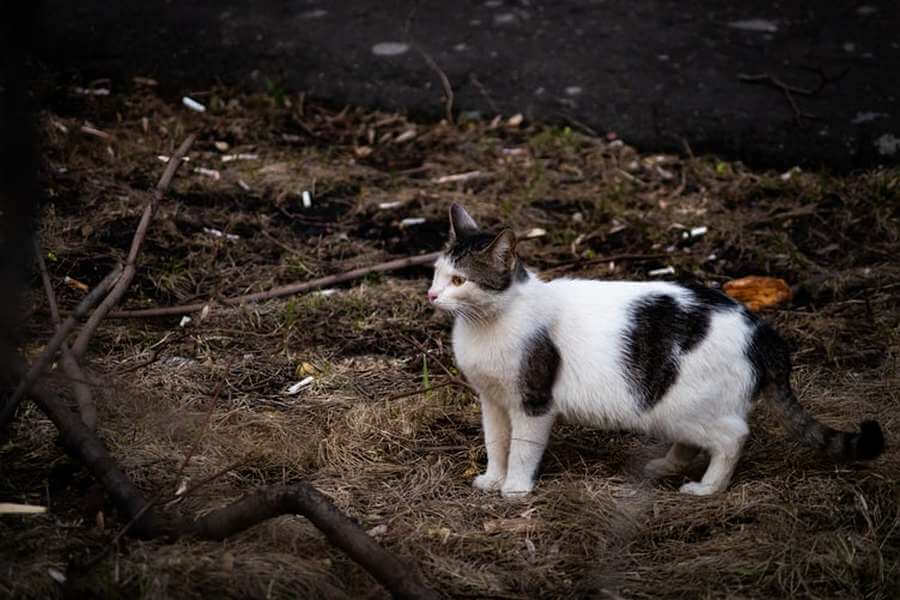
In recent years, people have found ways to provide feral cats with additional choices for shelter. This is primarily done by placing some sort of plastic bin within an outside common area where a feral cat might be seen.
These bins are usually customised to give a cat shelter from dangerous weather through the use of blankets or towels and typically include a source of food or water.
The bins feature a small opening where a cat can enter if it so chooses. Having one entry point reduces the amount of cold weather that can enter the box. This is a great way to help out feral cats when the weather makes a turn for the worst.
These boxes can be created and provided for indoor cats that like going outside as well. However, as expressed before, if the weather appears to be too severe, it is a better idea to keep them inside.
Even though they can withstand certain temperatures, cats shouldn’t be left outside if the temperatures are expected to drop, especially if they are going to drop dramatically.
How To Tell If Your Cat Is Cold?
If you let your cat outside because it enjoys the outdoors, it is critical to watch for signs of them being too cold. It is important to note that these signs will generally only occur if the temperatures have reached a point that is below freezing.
Even still, watching for signs of them being cold helps you ensure that they are being protected from the elements properly. It also helps determine the early stages of hypothermia.
Below are the top signs to tell if a cat is cold.
Signs That A Cat Is Cold
Their Paws, Ears, And Tips Of Their Tails Feel Cold
In general, a cat is able to withstand colder weather. However, in certain conditions, they start to lose heat and become colder. If their paws, ears, or tips of their tails feel cold, they are probably cold.
This is because these particular areas on a cat lose heat first (like how humans lose heat from their heads and feet).
Whether they are outside or the house is too cold, checking these parts of their body to see if they are cold is a red flag that they are chilly.
You Find Your Cat Seeking Out Sources Of Warmth
It is true that cats seek out warmth almost any time of year. However, as it starts getting colder out, they tend to do it more. They will be seen near heating vents, in blankets, etc.
While they prefer being warm overall, if they are seeking these spots out more often than not during colder months, they might be too cold. They might not be getting enough heat. If this occurs, providing them with extra heat is necessary.
Things like thick blankets are a great start. It could also be a good idea to turn up the heat in the house if it is an issue while they are inside.
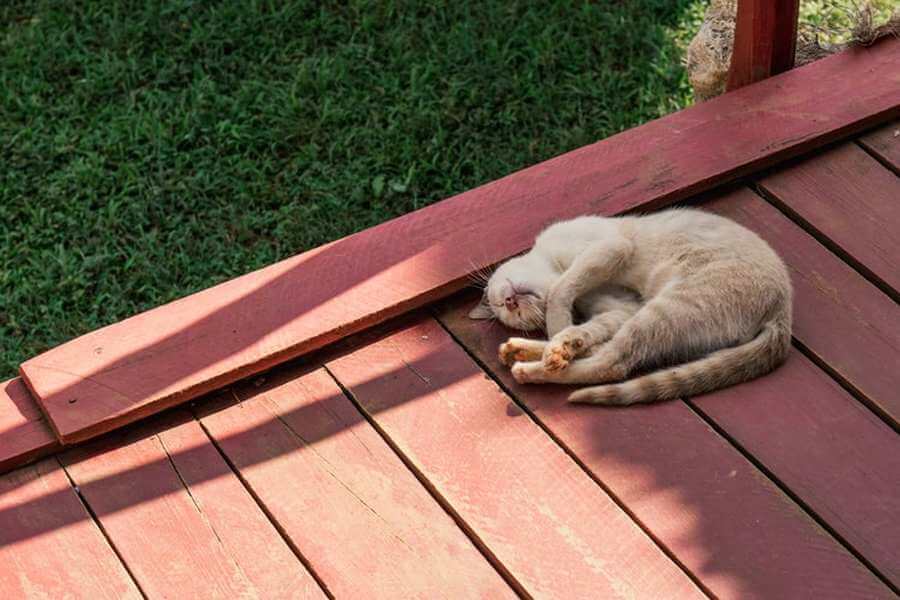
When A Cat Is Cold It Can Curl Into A Ball
Some cats like sleeping while they are curled up in a tight ball. Moreover, they might be tuckering their paws and tail under themselves in an attempt to stay warmer.
This can be witnessed by cats outside or inside. If this is the case, an attempt to provide them with options for warmth could be helpful. If it is a feral cat, try the plastic box idea.
They might not go in there if you are standing there due to trust issues, but they will eventually if they want to. If it is a domesticated pet cat, bringing them indoors and/or giving them blankets or access to more heat is the best option.
If Your Cat Appears Weak And Shivering It’s Cold
Vets state that cats can start showing signs of early hypothermia if their body temperatures stop dropping below 90 degrees (or 32 degrees Celcius).
When this occurs, they will start appearing weak and will start shivering. While this is most commonly associated with the early stages of hypothermia, they could exhibit these signs if they are simply too cold.
This could be due to cold winds rather than below-freezing temperatures. Either way, if a cat appears to be shivering or weak, bring them inside to provide them with proper heat.
These signs can really help you notice if your cat is too cold. Even if they are exhibiting a little bit of any of these signs, getting them to a heat source is important.
They will be more comfortable and really appreciate the efforts to get them warm again.
Over time, cats have adapted to colder temperatures. Even still, feral cats seek shelter in colder months and pet cats shouldn’t be allowed out in extreme weather.
It not only keeps the cat safe but ensures that they are being as comfortable as possible!
More Pages On Cats
Have you ever noticed when you get home from a long day of work or being out for the day, and you go to sit down and relax, and almost instantly your cat decides to jump on your lap and lie...
Cats can be known to be sociable animals, and one of the ways they show their affection to their owner is by sleeping with them. Now this may not be a huge sign of affection to you but for a cat it's...


